The promise of new flavours beckons from Banawe.
Homeowners Share the Reality of Tiny House Living in the Philippines

Good for the environment, budget-friendly, and practical — these are just a few factors that draw many people to the concept of tiny house living. But in the Philippines, what is the reality of building your life in such a small space?
In this article, we speak to four homeowners about the reality of tiny house living in the Philippines. They talk to us about their budget and expenses, the problems they’ve encountered, and the unbelievable changes they’ve made as a result of living tiny.
Also read: Modular Houses Give Filipinos Budget-Friendly and Sustainable Options for Their Homes
The reality of tiny house living like in the Philippines
Franco Panganiban
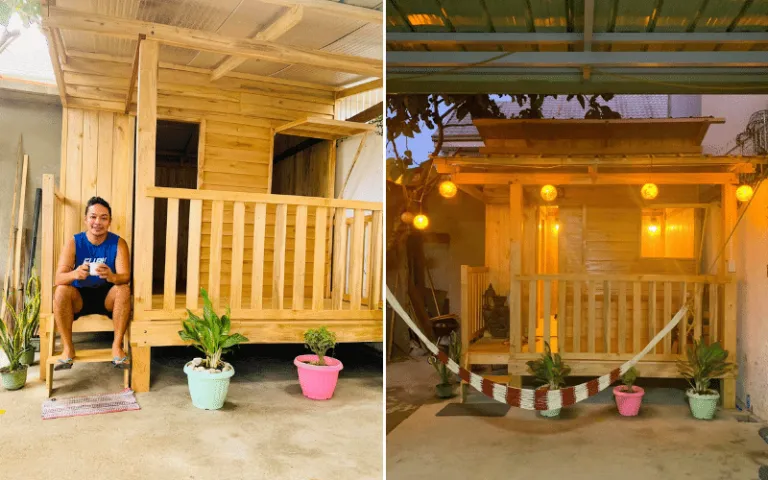
Now living in Canada, Franco built a 12sqm tiny house for his parents in Cavite. While his family already had a house where they lived full-time, Franco wanted to create a space where they could have a “vacation” of some sort during the lockdown.
“The whole process was very exciting,” Franco shares with us. “We combed through Cavite to find the cheapest and best quality wood suppliers. Eventually, our journey took us to Pasong Langka, where we met Ka Jimmy, an Igorot who knows a lot about wood. Using Malaysian wood and yak, we spent around ₱150,000 on the whole tiny house.”
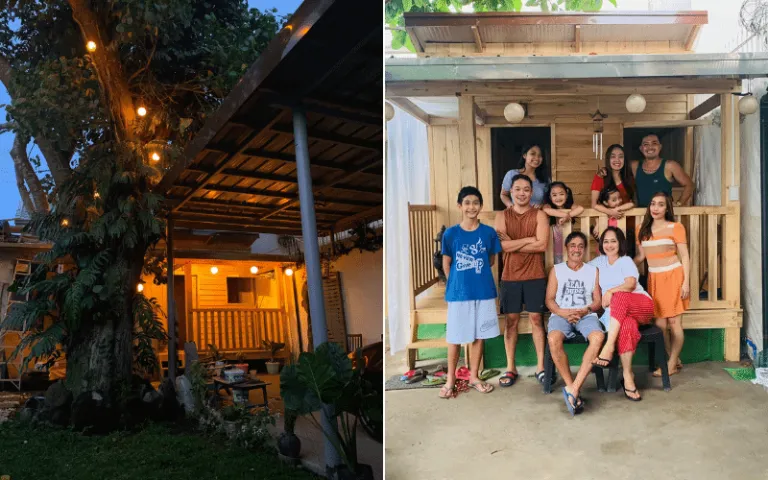
But of course, the reality of tiny house living in the Philippines is not always beautiful. “When it’s raining hard at night, light sleepers would certainly get bothered,” Franco says. “The sound of heavy rainfall is sometimes a challenge for us, especially when we have to keep up conversations but can barely hear one another.”
Fortunately, Franco’s tiny house sits adjacent to their main house, so they don’t really feel the perils of tiny house living. Instead, they enjoy it as a bahay bakasyunan: “It’s low-maintenance, easy to clean, and has the ‘probinsya feels.’ It also has its own unique charm and beauty, and it’s easy to build.”
Also read: 5 Reasons to Invest in Property Outside Metro Manila
Apollo and Ayen Ylagan
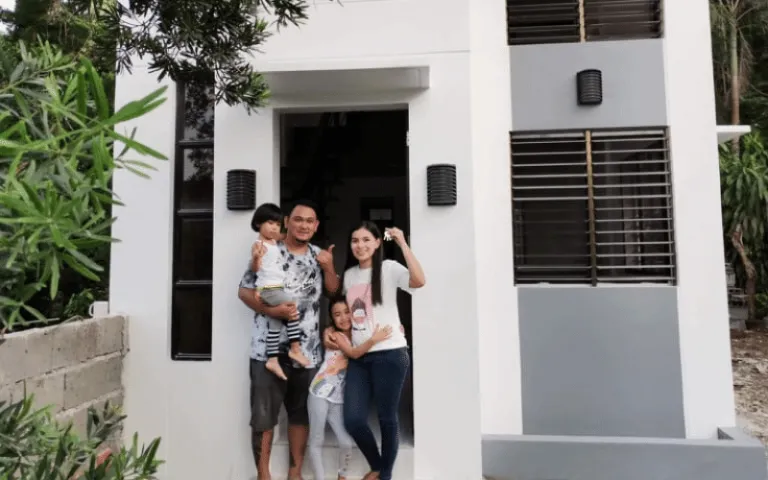
When Apollo and Ayen were brainstorming for ideas on how to build a home in their lot, they were limited to tiny house concepts. “The lot that we have is really narrow,” Apollo explains. “It’s roughly four metres wide, and conventional house designs wouldn’t fit.”
Their situation led them to search for tiny house inspirations. Eventually, the couple stumbled upon the Tiny House Nation YouTube channel. Since then, tiny house living was no longer a burden, but a dream.
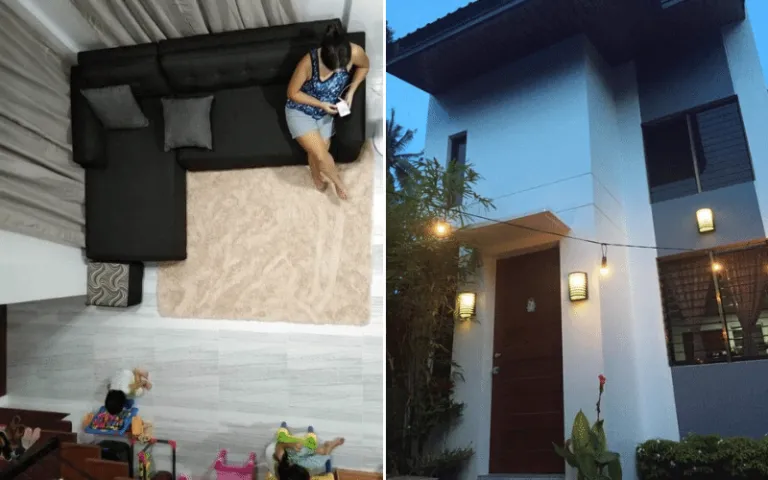
It took them two months to complete their 35sqm tiny house. With a standard finish, the tiny house cost roughly ₱1,000,000 in total. “Being a family of four, living in a tiny space makes us even much closer to one another,” the couple shares.
However, the reality of tiny house living in the Philippines isn’t all rainbows and unicorns. After all, many Filipinos share the love and sentimentality for many material things. As for the Ylagans, this was the biggest challenge they had to face. “We had to sell and donate the stuff that we had,” shares Apollo. “Now living less, we only have things that we really need. It’s also much easier to clean!”
Also read: 5 Airbnb Trailers in the Philippines for the #VanLife Experience
Henry and Katherine Cuyuca
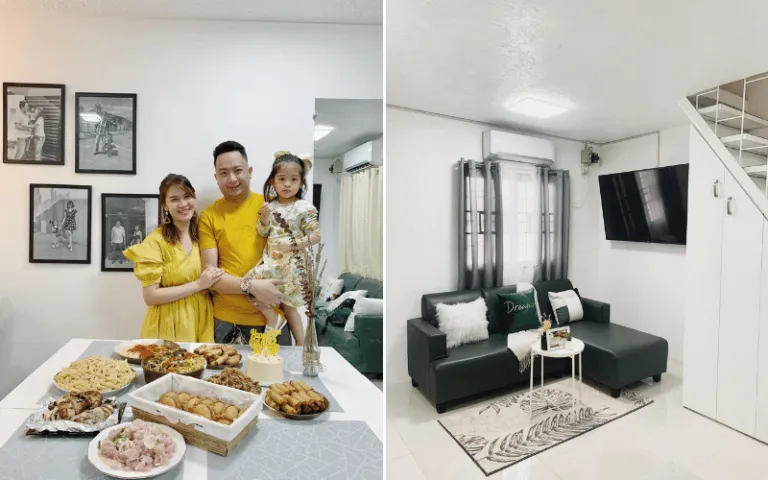
Henry and Katherine now share a beautiful 42sqm home, but neither of them dreamed of living in a tiny space when they were younger. “Both my husband and I used to live in spacious houses,” Katherine tells us. “We both loved the idea of living conveniently with ample space.”
But when Katherine’s parents died in 2013, she and her siblings had to sell the house and evacuate the items in it. “We had to clear our kitchen cabinets, bedroom closets, and many more. After that challenging process, I decided I wanted to start living minimally.”
When Katherine and Henry got married not long after, they watched tiny house living documentaries and fell in love with the idea together. “We purchased our unit from a housing company in our city. Because it’s a low-cost solo type unit, we never faced any problems in terms of construction. But because the inside structure was raw, we spent around ₱700,000 on partitions, cabinets, ceiling, floor tiles, paint, furniture, and all the other interior fixtures.”
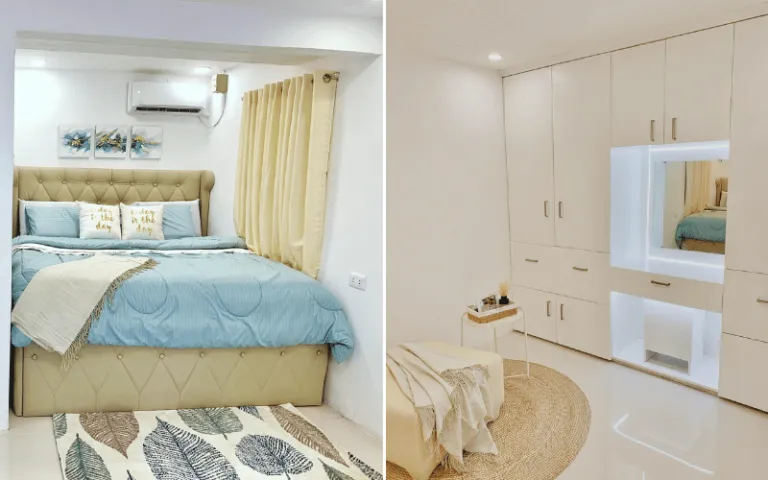
“We once doubted that we could live in a tiny space comfortably. But now, we’ve realised that we don’t really need much space to live well,” Katherine continues. “We have no regrets about living in a tiny house. We now live comfortably and in a clutter-free environment — that alone has brought us so much joy.”
As for the best thing about tiny house living in the Philippines? She says: “We love that our house inspires other Filipinos. Even with a small budget, you can get a decent space and enjoy it with your loved ones! Houses don’t always have to be big. Just maximise the space you have to make it functional according to your needs.”
Also read: How This Couple Built a Low-Cost House in the Philippines
Ket Fernando
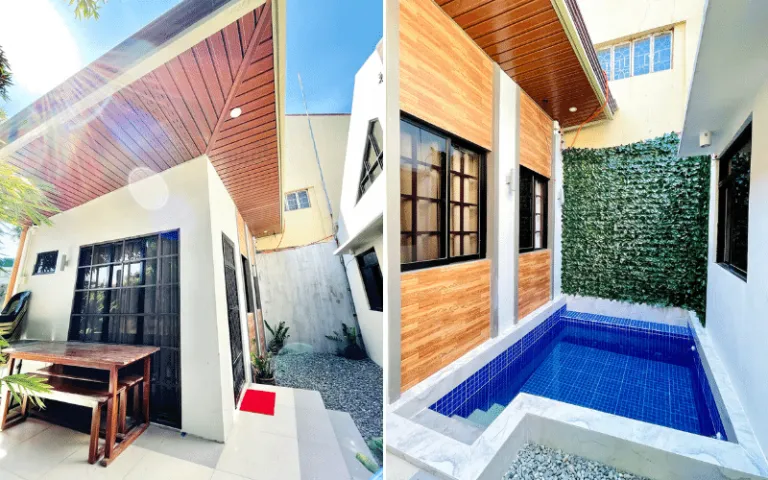
“I wanted to live on my own at a young age,” Ket shared with us when we asked what inspired him to pursue tiny house living in the Philippines. “Most of us dream of ambitious houses, and there is nothing wrong with that. However, due to financial constraints, we delay the dream houses and settle for renting a condo, apartment, or living with parents. Living tiny is a breakthrough for young people.”
To drastically cut costs, Ket built his tiny house himself. As a civil engineer, he was able to spend only around ₱400,000 overall for his 18sqm tiny house. “If you hire a contractor, you can expect a typical markup cost and spend around ₱17,000 to ₱25,000 per square metre for a fully furnished tiny house.”
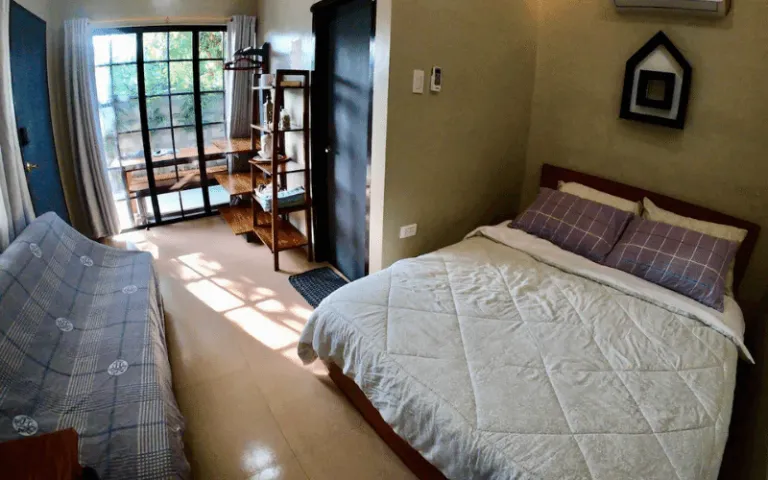
While Ket is living abroad at the moment, he’s now renting out his tiny house, listed as The Pad on Airbnb. If all goes well, he hopes to build his second tiny house after his wedding this year, so he can finally settle down with his future family.
“Achieving such accomplishments can give you confidence that you can do more things,” he shares. “For example, I also constructed an additional pool in the tiny house with the savings that I got. I didn’t see that coming, but I’m more confident to explore more and implement ideas since I made it before.”
With this, Ket also encourages other young professionals to follow their dreams of living tiny. “Tiny house living is appropriate in the Philippines, especially if you live inside or near Metro Manila, where the cost of land is increasing,” he explains. “With its relatively few materials and energy consumption, we can also contribute to sustainability that most of us should be aware of.”
Enjoying the reality of tiny house living in the Philippines
Like everything in life, tiny house living has its own pros and cons. But, we hope these real-life stories of tiny house owners have inspired you to consider this way of life — an ongoing lesson of minimalism, contentment, and practicality.
Got a property you’d like TripZilla to feature? Inquire with us here.
Published at
About Author
Danielle Uy
Subscribe our Newsletter
Get our weekly tips and travel news!
Recommended Articles
10 Best Banawe Restaurants for a Mouthwatering Food Trip in QC 10 Commandments for Responsible Travel Flexing Spread the good word!
10 Long Weekends in the Philippines in 2023 Book those flights ASAP.
10 Tips for Planning Out-of-Town Trips During Typhoon Season Stay safe and travel well during the rainy season.
12 Most Colourful Natural Attractions Around The World! It’s time to cross over the rainbow!
Latest Articles
Pope Francis Dies at 88 After Illness Remembering his travels and legacy
Mother’s Wonderland: Quezon Province’s Fantasy Theme Park Explore a magical theme park in Tayabas filled with nature, art, and fantasy
Kayangan Lake in Coron, Palawan: Everything You Need to Know Dive into the crystal-clear magic of Kayangan Lake, the crown jewel of Coron, Palawan!
Dingalan Travel Guide: Nature Spots to Discover Now Underrated coastal gem in Aurora
What to Eat in Bicol: Iconic Dishes and Treats, and Unique Pasalubong You’ll Love Spice up your foodie adventure with iconic Bicol dishes and must-try pasalubong!

